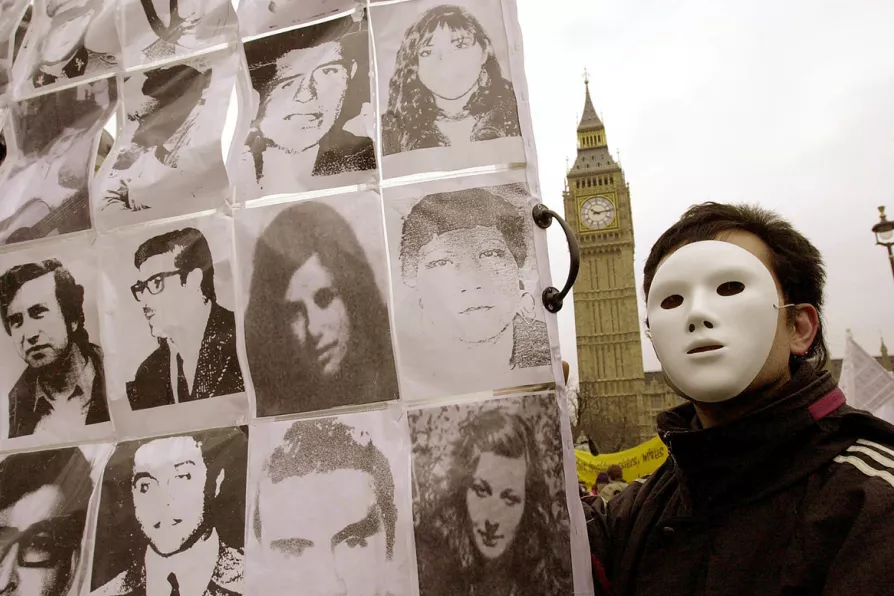After years hidden away, Oldham’s memorial to six local volunteers who died fighting fascism in the Spanish civil war has been restored to public view, marking both a victory for campaigners and a renewed tribute to the town’s proud International Brigade heritage, says ROB HARGREAVES
Honouring Chile’s disappeared
Chilean resistance activist SERGIO VASQUEZ addressed a gathering unveiling a plaque in the city of Sheffield marking the 51st anniversary of the 1973 fascist coup in Chile on Saturday — we reprint his powerful speech here

 One of the many protesters against former Chilean dictator, General Augusto Pinochet, in Parliament Square, 2000
One of the many protesters against former Chilean dictator, General Augusto Pinochet, in Parliament Square, 2000
SEPTEMBER 11 1973, marked the beginnings of one of the darkest periods in our country’s history.
There were widespread human rights violations, political repression, and the systematic elimination of trade unionists, students, teachers, lecturers, peasants, shantytown dwellers, and the assassination of our president Salvador Allende.
With the full support of the armed forces, the dictator, Pinochet, they established a brutal regime, suppressing all civil liberties, and persecuting political opponents.











